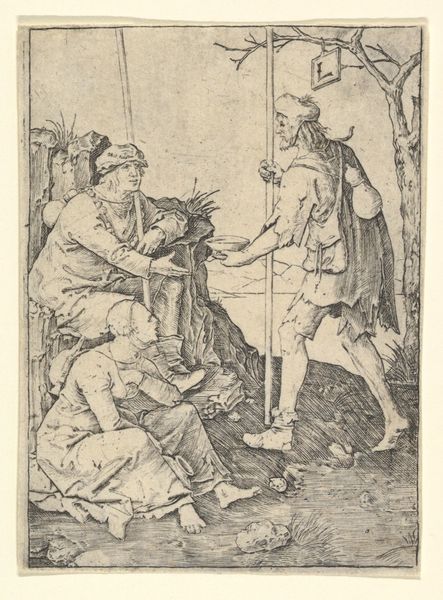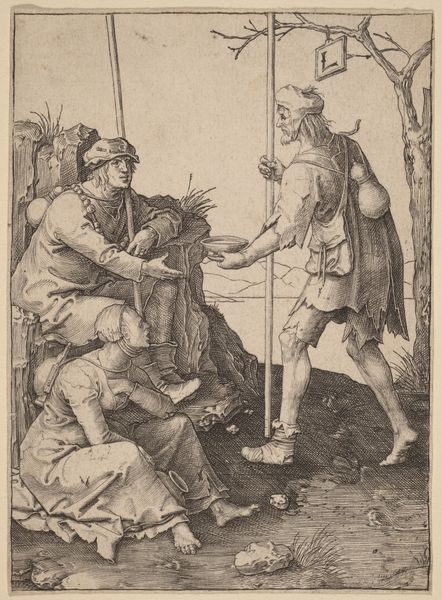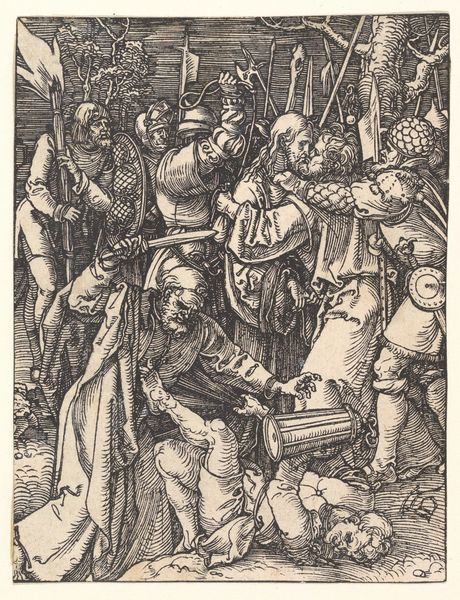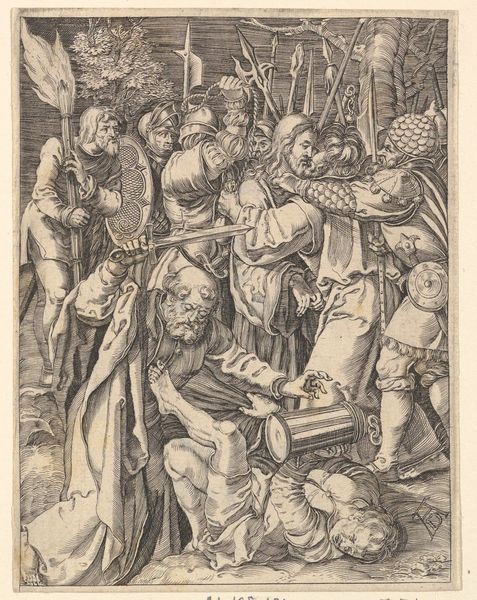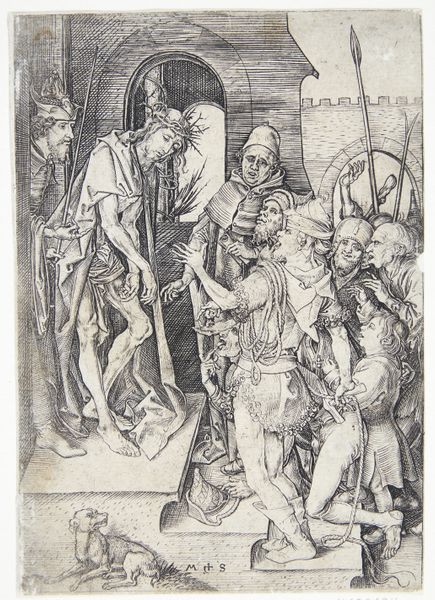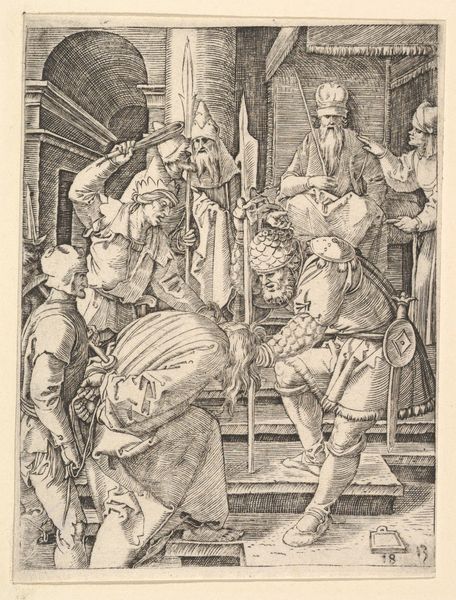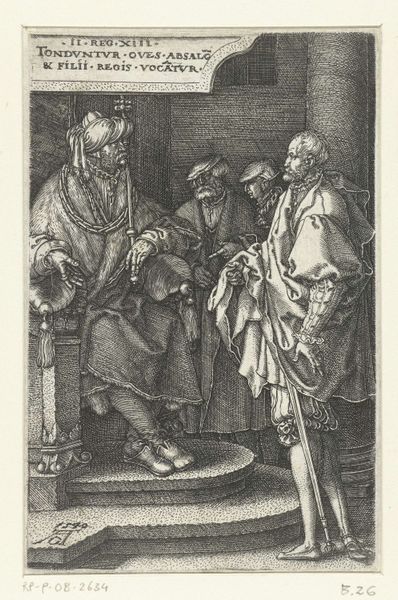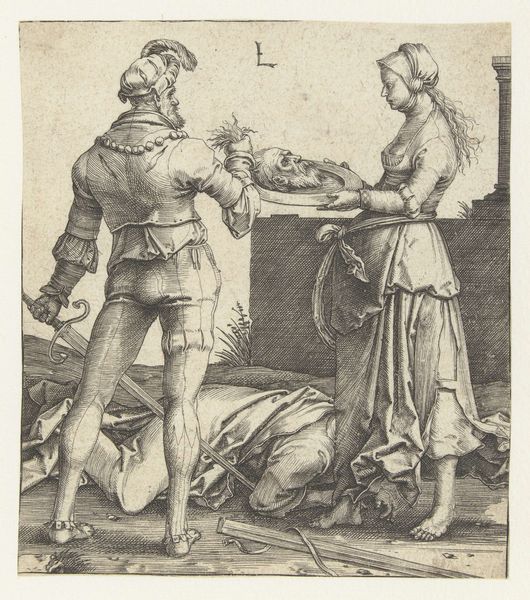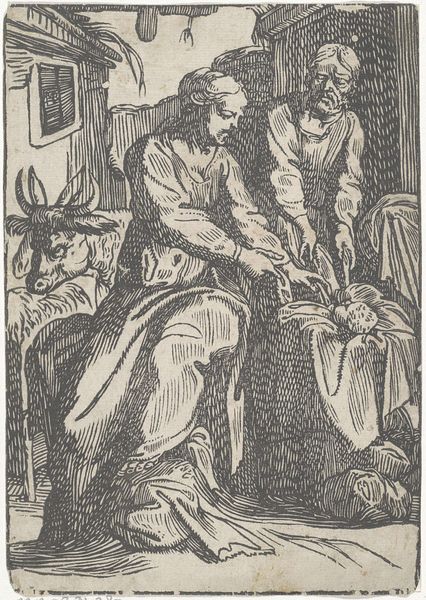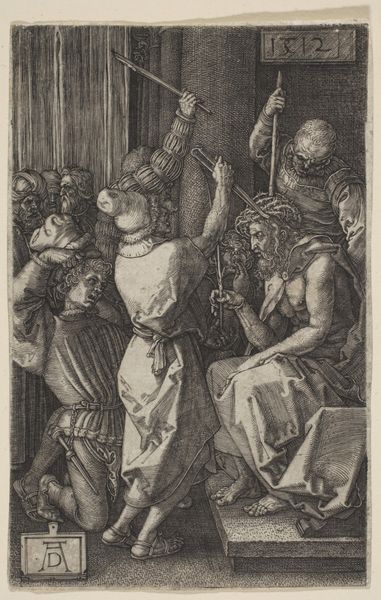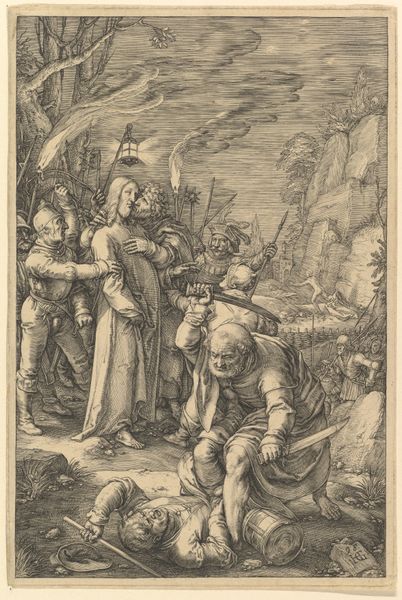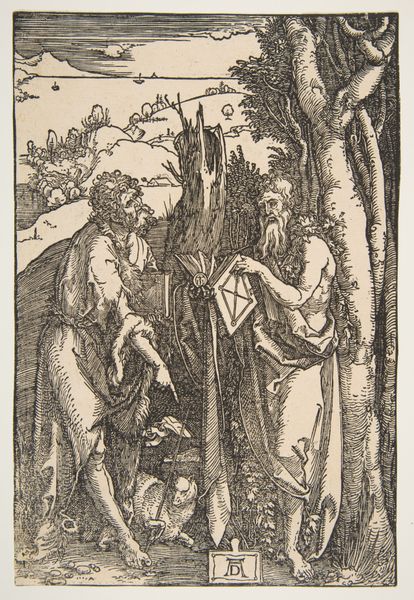
print, engraving
#
medieval
#
narrative-art
# print
#
figuration
#
line
#
genre-painting
#
northern-renaissance
#
engraving
Dimensions: sheet: 4 5/16 x 3 1/8 in. (11 x 7.9 cm)
Copyright: Public Domain
Curator: This engraving, known as "The Beggars," is attributed to Lucas van Leyden, though the dates range from 1489 to as late as 2006. Here in the Met's collection, it gives us a striking glimpse into genre painting during the Northern Renaissance. Editor: Oh, it's intensely unsettling. Look at the line work – it creates a sense of raggedness, of people worn down to their very threads. And the faces! They seem to hold stories of survival and hardship, you know? It gets under your skin, it really does. Curator: Precisely. Van Leyden employs line not merely descriptively but also expressively. Notice the varied densities and directions. Consider how the hatching models form while conveying texture—the rough cloth, the gaunt faces... Editor: And the central beggar, the one holding out his bowl—is that supposed to be some kind of cruel joke with the 'L' sign above him, dangling on the tree? It's like the artist is marking him out, branding him somehow. Is there supposed to be meaning beyond just, well, misery? Curator: The "L" does indeed add a layer of semiotic complexity. Some scholars posit a possible association with Lucas himself, a subtle, almost mocking signature, highlighting the artist's own observation of these marginalized figures. Editor: It's a dark sense of humor, then, maybe a way to show he understands what's going on—that he sees the irony of it all. You have those figures, seemingly enthroned on their stony perch, and then the wanderer. There's no redemption on offer. Only need. Curator: Van Leyden's engagement with the theme of poverty aligns with a broader societal concern during the Renaissance. This concern also encompasses a heightened awareness, as well as scrutiny, of the existing social hierarchies. Editor: I guess in the end what strikes me is just how contemporary this feels. The details of the clothing, the little objects that hang about—the rendering of their lives. That ache and longing, sadly, those are eternally with us. Curator: Indeed. “The Beggars”, through its intricate composition and nuanced execution, still offers viewers considerable aesthetic and cultural insight into 16th-century perspectives on marginality and social dynamics.
Comments
No comments
Be the first to comment and join the conversation on the ultimate creative platform.
